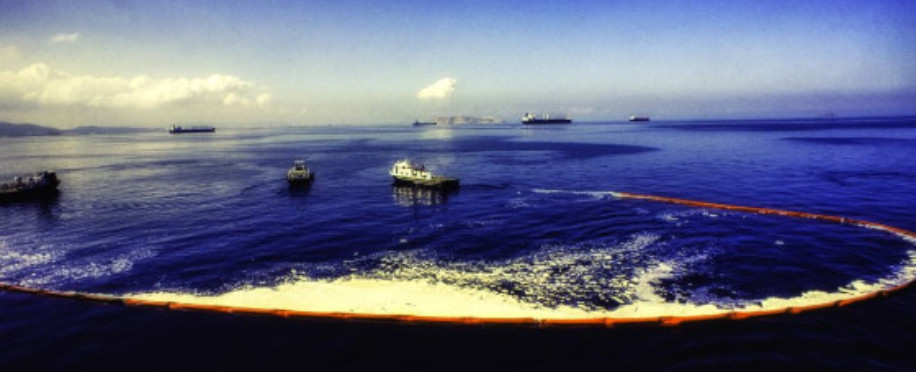Copyright © 2025 lmitac.com All Rights Reserved. Contact - Terms and Conditions - Privacy Policy - Quality Policy - Become an instructor - Vacancies - Sitemap
London Maritime Academy is a trade name for London Premier Groupversion: 2.9.0
London Maritime Academy is a trade name for London Premier Group

Posted on : 10/5/2023, 11:33:35 PM
Oil spill detection always caught the world's attention due to its essential role in protecting marine ecosystems, coastal natural communities, and the overall planet balance.
Thus, the new technologies used in oil spill detection are becoming more popular, including SAR remote sensing, AI, and sensor networks, to develop more accurate, scientific, and cost-effective solutions for detecting oil spills.
Join us in this article to discover the cited range of technologies in oil spill detection with information about offshore operational processes, concerns about oil spills, and the expected benefits of early oil spill detection.
The world is worried about oil spills into the ocean's water due to its harmful impact on the oceanic and global environments.
Thus, the latest oil spill detection and monitoring process detects small or more significant spills. Therefore, it is considered a cited practice for enhancing maritime safety.
However, oil spills, when they happen, have terrible impacts, and we are going to mention some of them:
Oil spills into the waters kill marine life as they clog the gills of fish and smother underwater vegetation, leading to toxins in the environment and harming the reproductive cycles of marine species.
The marine ecosystem is sensitive, and any oil spills could and would harm corals and mangroves, which are crucial nurseries for marine species.
Eventually, the oil spills will reach the coastal areas, impacting the variety of marine life and coastal life, fishing, and tourism.
Even with the latest synthetic aperture radar (SAR) some oil spills may sink to the ocean floor and cause toxic harm to the food chain for years.
Before listing the cited technologies in oil spill detection and monitoring, let us talk about the process itself and the included steps:
Scanning the water's surface with human power or software applications, observing vessels, and monitoring coastal lines.
With the latest synthetic aperture radar (SAR) on satellites, operators detect any cited and visible changes in the sea or ocean, which enables cleaning the space immediately.
Based on current and future weather data, scientists can predict the movement of oil spills after they happen.
It is a source tracing where oil shipment records are created to trace oil spill sources.
All professional oil spill crisis management training courses encourage companies and ports to use these cited technologies to detect oil spills; moreover, to come out with the best surveillance results, you can use some of these techniques together:

Despite the weather conditions, SAR is a cited detecting technique that can take high-resolution ocean surface images through microwave radar.
The pollution on the water's surface can be seen by detecting and analysing the differences in radar reflections.
After training AI algorithms on many data sources from satellite images and data sensors, they can automatically detect and sense patterns related to oil spills.
Using underwater and surface sensors in this method, the water quality can be monitored with real-time data and early notification can be sent.
Moreover, these detectors spread in specific locations to detect oils.
Drones are equipped with advanced and optical remote sensors to monitor oil spill-affected areas with high-resolution imagery and real-time datasets that provide rapid and effective monitoring of any oil spill.
Using laser tracking, the LiDRA system delivers detailed 3D maps of earth and ocean surfaces. With them, any changes in the water's surface can be detected rapidly, whether we are talking about small or large spilling.
These robots include remotely operated vehicles (ROVs) and autonomous underwater vehicles (AUVs) with sensors and cameras to explore aquatic environments, detect oil spills, and respond immediately with the proper solution.
These comprehensive benefits give you a sneak peek at why developed oil spill detection is this important:
Early detection leads to rapid responses, preventing environmental damage and reducing seep risk.
Accurate oil spill detection reduces false or passive alarms compared to old-used methods.
Cost saving, especially with the use of remote sensing and detection.
Enhanced response framework planning, especially during emergencies.
You can pay attention to oil spill detection, especially with all the maritime transportation processes.
Thus, do your part in protecting the environment by updating your ships and monitoring technologies and training your team to use the latest oil spill detection technologies.